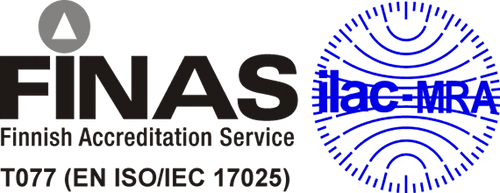Organic tin compounds
The method is primarily used in collaborative research projects, and other analytical services are agreed on a case by case basis. Written requests and contacts:
Environmental pollutant analysis
Accreditation
- The method is accredited with a flexible scope for tissue and sediment
Number of samples
- Also for single samples
Matrices
- Whole blood and other human samples
- Fish and other animal samples
- Food
- Soil, sediment and other environmental samples
Method description
- Analytes are extracted with an organic solvent. Ethyl derivatives are formed using sodium tetraethyl borate, and the samples are cleaned with an aluminium oxide column. The quantification is performed with a gas chromatograph coupled to a triple quadrupole mass spectrometer (GC-MS/MS).
Limit of quantification
- 0.4–3.0 ng/g dry weight (sediment)
- 0.1–1.1 ng/g fresh weight (tissue)
- The analysis of dioctyltin from all matrices and diphenyltin from tissue samples is semiquantitative
Sampling instructions
- Sample container: glassware washed with HCl (available from THL), aluminium foil or original package
- Avoid contact with coloured plastics
- Blood samples must be treated with an anticoagulant
- Minimum sample amount: whole blood 5.0 ml, water 500 ml, other samples 50 g
- Maximum storage time: -18°C for at least 5 years, -70°C or in liquid nitrogen for at least 20 years
- See also the general sampling instructions that apply to all analyses:
Environmental pollutant analysis
Dispatch
- Cold package
Analytes
- Monobutyltin (MBT)
- Dibutyltin (DBT)
- Tributyltin (TBT)
- Monophenyltin (MPhT)
- Diphenyltin (DPhT)
- Triphenyltin (TPhT)
- Dioctyltin (DOT)
The unit is a FINAS accredited testing laboratory T077. It has been accredited according to the standard SFS-EN ISO/IEC 17025:2005 and its scope of accreditation is available on the website of FINAS (Finnish Accreditation Service).
The work order must be included in the shipment of samples along with an itemized sample list, if needed.
Work order for environmental pollutant analyses (PDF 132 KB)





